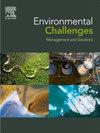Fine particulate matter (PM2.5, PM10): A silent catalyst for chronic lung diseases in India; a comprehensive review
Q2 Environmental Science
引用次数: 0
Abstract
This review assesses the role of microparticles (PM2.5 and PM10) as a silent yet pivotal cause of chronic lung disease in India. It explores these pollutants' sources, composition, and health effects while providing an overview of regulations, public health consequences, and areas requiring further research. A critical appraisal of validated sources, including government reports, peer-reviewed literature, and environmental databases, was conducted, focusing on the past five years of PM levels in Indian cities and their association with chronic lung disease. The study investigates pathways of lung injury through oxidative stress, inflammation, and sustained respiratory impairment. Findings reveal that PM2.5 and PM10 levels in both urban and rural areas frequently exceed WHO guidelines, particularly in major cities, contributing to increased cases of COPD, asthma, lung cancer, and pulmonary fibrosis. The most vulnerable groups, including children and the elderly, bear a disproportionately high disease burden. Furthermore, PM pollution places a significant strain on India's healthcare system due to rising treatment costs and diminished quality of life. As particulate matter remains a critical public health issue affecting respiratory health and healthcare resources, urgent policy interventions, technological advancements, and grassroots initiatives are necessary to mitigate its impact. Additional scientific research is needed to bridge gaps in understanding PM's long-term health effects and develop advanced monitoring systems for better air quality management.

细颗粒物(PM2.5、PM10):印度慢性肺病的无声催化剂全面回顾
本综述评估了微颗粒(PM2.5和PM10)作为印度慢性肺部疾病的沉默但关键原因的作用。它探讨了这些污染物的来源、成分和健康影响,同时提供了法规、公共卫生后果和需要进一步研究的领域的概述。对包括政府报告、同行评议文献和环境数据库在内的有效来源进行了批判性评估,重点关注印度城市过去五年的PM水平及其与慢性肺病的关系。该研究通过氧化应激、炎症和持续呼吸损伤来研究肺损伤的途径。调查结果显示,城市和农村地区的PM2.5和PM10水平经常超过世卫组织指南,特别是在主要城市,导致慢性阻塞性肺病、哮喘、肺癌和肺纤维化病例增加。包括儿童和老年人在内的最脆弱群体承受着过高的疾病负担。此外,由于治疗费用上升和生活质量下降,PM污染给印度的医疗保健系统带来了巨大压力。由于颗粒物仍然是影响呼吸系统健康和卫生保健资源的重要公共卫生问题,因此需要紧急政策干预、技术进步和基层倡议来减轻其影响。需要进行更多的科学研究,以弥合在了解PM对健康的长期影响方面的差距,并开发先进的监测系统,以更好地管理空气质量。
本文章由计算机程序翻译,如有差异,请以英文原文为准。
求助全文
约1分钟内获得全文
求助全文
来源期刊

Environmental Challenges
Environmental Science-Environmental Engineering
CiteScore
8.00
自引率
0.00%
发文量
249
审稿时长
8 weeks
 求助内容:
求助内容: 应助结果提醒方式:
应助结果提醒方式:


